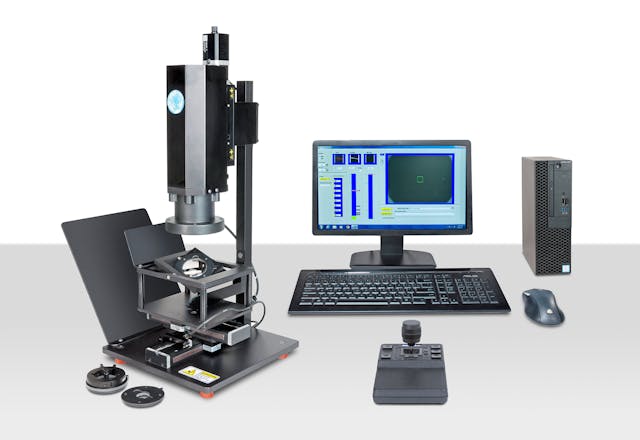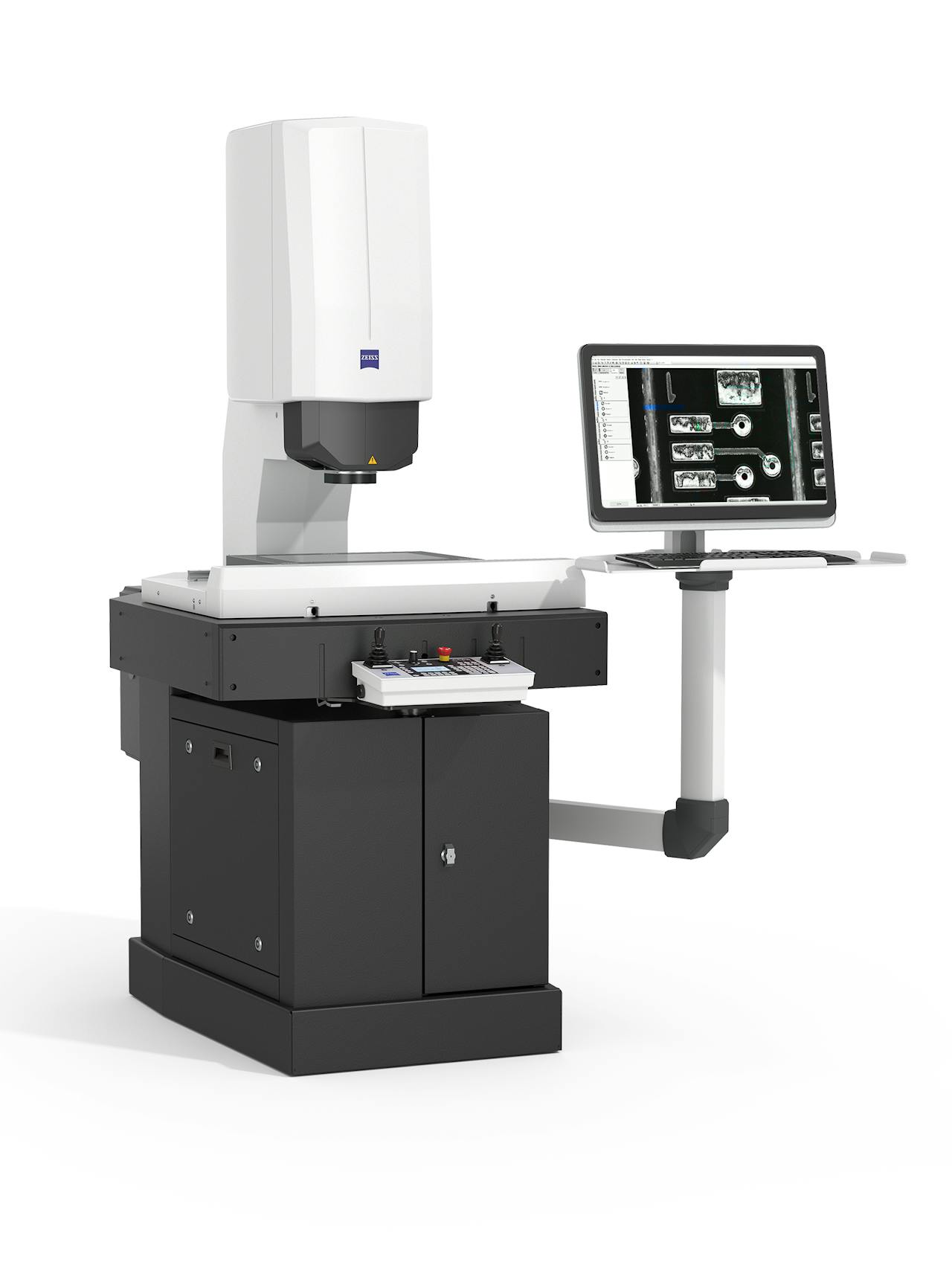The Function of Optical Dimension Solutions ahead of time Assessment Methods
Optical dimension systems have changed assessment, bringing a level of precision that was once unbelievable. You may be shocked to find out exactly how these modern technologies, based upon basic principles like representation and disturbance, are applied throughout different industries. Their non-contact capacities not only boost precision but likewise improve processes. As you discover better, you'll find just how these systems are forming the future of dimension and quality assurance.
The Evolution of Width: A Historic Viewpoint
As you check out the history of metrology, you'll find that its evolution mirrors humanity's pursuit for precision and standardization. From old civilizations making use of body components as units of dimension to the development of standardized weights and procedures, each step reveals our need for accuracy. The Egyptians built the pyramids utilizing precise measurements, while the Romans progressed design with their innovative measuring tools.
During the Renaissance, clinical breakthroughs shifted the focus towards extra empirical methods, leading the means for modern metrology. The introduction of the metric system in the late 18th century marked a substantial milestone, establishing universal requirements. Throughout the 20th century, technological improvements better changed metrology, enabling highly accurate measurements in various fields.
Today, metrology continues to develop, integrating digital innovation and automation. This history highlights not just the importance of measurement however likewise our ruthless pursuit of improving accuracy and consistency in our increasingly intricate globe.
Concepts of Optical Dimension Solutions
Comprehending the principles behind optical measurement systems is crucial for accurate results in assessment. You'll want to take into account fundamental optical concepts, dimension accuracy elements, and effective system calibration techniques. Each of these components plays a vital duty in ensuring your measurements are reputable and accurate.
Fundamental Optical Principles
While discovering optical measurement systems, you'll experience essential optical principles that form the backbone of precise data acquisition. Light acts in foreseeable ways, and comprehending these behaviors-- like diffraction, representation, and refraction-- is important for reliable dimensions. By mastering these principles, you'll be outfitted to leverage optical technologies successfully, leading the means for advancements in assessment and guaranteeing your dimensions are both repeatable and dependable.
Measurement Precision Aspects
To attain high dimension accuracy in optical systems, several elements enter play, influencing the dependability of your outcomes. The top quality of the optical components matters greatly. Top quality lenses and detectors decrease aberrations and noise, ensuring your measurements are precise. Second, ecological problems like temperature level and moisture can influence dimensions, so keeping a steady atmosphere is crucial. Third, the placement of the optical system is critical; also small imbalances can cause considerable errors. Finally, the wavelength of light made use of influences the resolution and precision of your measurements. By addressing these factors, you can boost the total performance of your optical measurement systems, leading to even more precise and reliable cause your metrology applications.
System Calibration Methods
Accomplishing high measurement accuracy is only component of the formula; appropriate system calibration methods are similarly important in optical measurement systems. Next, use well-known dimensions to confirm the system's outcome and make necessary corrections. With these techniques, you'll boost the integrity of your optical dimension system.
Secret Technologies Behind Optical Dimension
Optical measurement systems rely upon numerous essential modern technologies that improve accuracy and effectiveness in width. One essential modern technology is interferometry, which makes use of the interference of light waves to determine small displacements and surface abnormalities with severe precision. You'll likewise find laser scanning systems, which capture comprehensive 3D information of items rapidly, making them invaluable for dimensional analysis.
Additionally, CCD and CMOS sensing units play a substantial duty in transforming light into electrical signals, permitting for high-resolution imaging and precise measurements. Advanced formulas for photo handling better improve measurement accuracy by evaluating data in genuine time, straining noise and improving attributes.
Lastly, optical fiber give versatility and the capacity to determine in hard settings while keeping signal integrity. By leveraging these innovations, you can accomplish premium lead to your width tasks, guaranteeing that your dimensions are both precise and reliable.
Applications of Optical Measurement in Market
As markets increasingly require accuracy and effectiveness, the applications of optical dimension systems have actually become vital across various markets. In production, these systems help you keep an eye on measurements and tolerances in real-time, guaranteeing quality assurance without time-consuming hand-operated checks. In the automotive market, optical measurements assist in aligning elements with precision, improving safety and security and efficiency.
In electronics, you're using optical techniques to evaluate min features on motherboard, detecting problems that might bring about failures. The aerospace industry take advantage of non-destructive screening techniques, enabling you to Web Site analyze products and parts without endangering their integrity.
Optical dimension also plays a vital duty in textiles, guaranteeing fabric measurements fulfill exact specifications. optical measurement. With their capability to provide high-resolution data rapidly, these systems equip you to make informed decisions, enhance processes, and ultimately drive innovation throughout your sector
Enhancing Precision and Effectiveness in Measurements
When you consider boosting accuracy in measurements, optical measurement system accuracy in your measurement techniques is essential. By streamlining these procedures, you can accomplish quicker results without giving up high quality. Let's explore just how embracing advanced optical measurement systems can elevate both precision and effectiveness in your work.
Accuracy in Measurement Strategies
Precision in measurement techniques is necessary for attaining reliable results in metrology, particularly considering that little disparities can lead to substantial mistakes. By making use of innovative optical dimension systems, you can boost the precision of your measurements. In addition, accurate measurements allow you to maintain high quality control, making certain that items fulfill rigorous requirements.
Simplifying Dimension Processes
To improve accuracy and efficiency in dimensions, simplifying your dimension procedures is vital. Beginning by taking on optical dimension systems that supply real-time data, decreasing the time invested on hands-on recording. These systems typically integrate seamlessly with existing software program, enabling you to automate data collection and analysis.
Following, standardize your dimension methods. By carrying out consistent treatments, you lessen variability and improve repeatability. Do not fail to remember to frequently calibrate your tools to ensure its precision.

The Influence of Optical Measurement on Study and Development
As scientists endeavor to push the boundaries of development, optical dimension systems have ended up being indispensable tools in the development process. These systems give you with specific, real-time information that enhances your capacity to assess complicated products and structures. In different areas, from biotechnology to aerospace, you rely upon optical measurements to maximize styles and boost product performance.

With high-resolution imaging and non-contact techniques, you can lessen example disturbance, permitting more precise results. This ability to capture minute information increases your R&D cycle, allowing you repeat layouts promptly and efficiently. Optical measurement fosters cooperation throughout techniques, as the information produced is commonly quickly interpretable and shareable.
Inevitably, incorporating optical dimension systems into your research not just enhances efficiency yet likewise deepens your understanding of the phenomena you research. By leveraging these sophisticated methods, you're better outfitted to innovate and remain ahead in a competitive landscape.
Future Fads in Optical Measurement Systems
With the quick improvement of innovation, you're likely to see substantial shifts in optical dimension systems that will redefine their application across different markets. You'll notice an action toward increased automation and assimilation of expert system, enabling for real-time information analysis and boosted accuracy. Miniaturization is an additional pattern; portable gadgets will certainly allow dimensions in tighter areas, making them ideal for areas like aerospace and biomedical applications.
Moreover, the development of advanced products, such as photonic crystals, will certainly enhance level of sensitivity and resolution. Expect to see systems that can run in tough atmospheres, giving reputable dimensions in extreme conditions. Cloud-based analytics will certainly also play a crucial role, providing you accessibility to big datasets for far better decision-making. As these technologies assemble, you'll locate that optical measurement systems not only improve accuracy but also improve operations, ultimately driving development and effectiveness in your tasks.
Regularly Asked Inquiries
Just How Do Optical Dimension Equipments Contrast to Typical Dimension Techniques?
Optical dimension systems offer higher accuracy and faster outcomes contrasted to typical strategies. You'll locate they record even more information factors precisely, minimizing human error and boosting dependability, making them a favored choice in various applications.
What Industries Benefit Most From Optical Measurement Equipments?
You'll locate sectors such as aerospace, automobile, and electronics benefit most from optical dimension systems. These markets count on exact measurements to guarantee quality and efficiency, improving performance and minimizing costs via innovative innovation.

Are Optical Measurement Equipments Expensive to Carry Out?
Optical measurement systems can be pricey to execute, yet their precision and performance frequently validate the cost. Buying such technology can bring about significant lasting cost savings and renovations in quality throughout various applications.
What Abilities Are Called For to Operate Optical Dimension Systems?
To operate optical dimension systems, you'll need solid logical skills, focus to detail, and efficiency in software program tools. Experience with optics and an understanding of dimension principles will additionally enhance your efficiency and performance.
How Do Environmental Variables Affect Optical Measurements?
Environmental aspects like air, moisture, and temperature level top quality can look at this web-site distort optical measurements. You'll discover variants in precision as a result of light disturbance or refraction. optical measurement systems. Preserving steady problems is necessary for reliable and accurate optical dimension outcomes
Verdict
In recap, optical measurement systems are transforming metrology by giving unequaled precision and efficiency. As you discover future patterns, you'll see how the integration of AI and automation will certainly continue to elevate dimension methods, driving innovation and boosting high quality control.
Achieving high dimension accuracy is just part of the formula; correct system calibration methods are equally crucial in optical measurement systems.When you assume regarding enhancing precision in measurements, accuracy in your measurement strategies is vital. By utilizing sophisticated optical measurement systems, you can improve the accuracy of your dimensions.To enhance accuracy and performance in measurements, simplifying your measurement procedures is vital. Just How Do Optical Dimension Systems Compare to Standard Dimension Techniques?